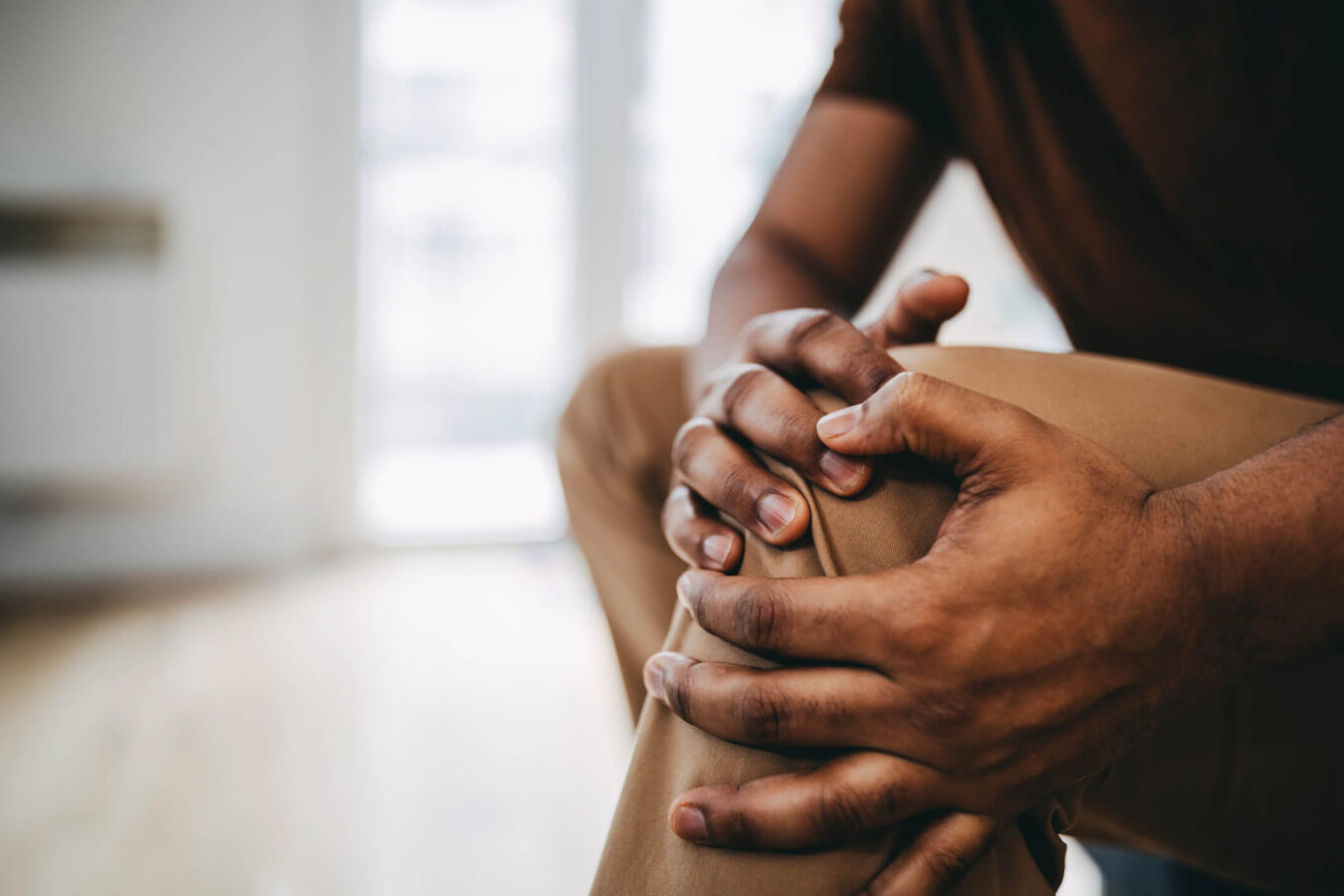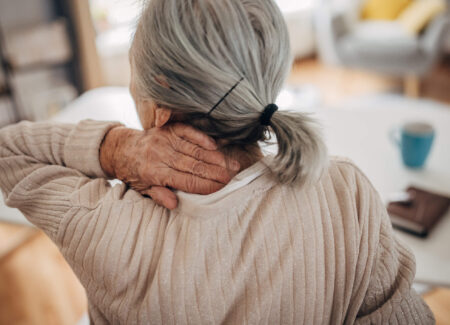
Medically reviewed by Misty Seidenburg
Patellofemoral pain syndrome is pain located under and around the kneecap. Also known as “runner’s knee” this condition affects people of all ages and abilities—not just runners. In this blog, we will explore the causes, symptoms, and treatments available for patellofemoral pain syndrome symptoms to help you feel better and get moving again without knee pain.
The knee is among the most complex joints in the human body. It is formed by the lower end of the thighbone (femur), the upper end of the shinbone (tibia), the calf bone (fibula), and the kneecap (patella.) Tendons and ligaments connect the bones to the muscles and act likes ropes to hold the bones together.
Several structures support healthy knee function. The patella rests in a small ridge located at the end of the thighbone. This is called the trochlear groove. As you bend and straighten your knee, the patella moves smoothly within this groove.
Slippery cartilage cushions the end of the knee bones and helps the them slide easily when the leg moves. Another tissue called synovium covers the surfaces of the knee joint and produces fluid to lubricate the cartilage. A small pad of fat underneath the patella acts as a shock absorber during movement.
It’s probably clear from this glimpse into the anatomy of the knee how many working parts have to function as designed to allow for proper, pain-free bending and extending of the knee and leg.
Injuries, anatomical differences, and systemic diseases can all disrupt proper knee function and contribute to the discomfort associated with patellofemoral pain syndrome.
Runner’s knee can be caused by:
Also, a sudden increase in activity that is too much load for your body’s capacity can exacerbate symptoms or increase the risk of developing patellofemoral pain syndrome. The condition is more common in women, high-intensity athletes, and adolescents and young adults.
Dull, aching pain in the front of the knee is an early indicator of patellofemoral pain syndrome. It typically comes on gradually and worsens with activities that involve bending the knee. Sitting for long periods of time can make pain worse.
Sports and activities that require lots of bending also tend to aggravate patella pain. Some people notice their pain worse after starting a new training regimen or increasing the intensity of exercise and other activities. Cracking and popping sounds when bending the knee are also commonly associated with patellofemoral pain syndrome.
Runner’s knee often improves with conservative treatments including home care, exercise, and stretching. Surgery is reserved for patients who don’t respond to noninvasive therapies.
The emerging school of thought supports the P.E.A.C.E. and L.O.V.E. protocol for healing soft tissue injuries like patellofemoral pain syndrome. This approach is a revision of previous the incarnations of the I.C.E. and R.I.C.E. acronyms widely-used for the rehabilitation of soft tissue injuries.
P.E.A.C.E. and L.O.V.E. was created to better address the subacute and chronic stages of recovery for better long-term outcomes. The most notable changes include guidance on avoiding icing and anti-inflammatory medications. While both options may offer mild, immediate improvement, research suggests they can potentially interrupt the inflammation process and impair tissue repair.
If symptoms don’t improve after a few days to a week of home care, physical therapy may be the answer. Holistic physical therapy addresses multiple issues that may be causing your pain.
Physical therapy for patellofemoral pain syndrome includes:
Physical therapists also have a wealth of information to share with patients. Learn how simple changes like choosing the right footwear or wearing a patellofemoral pain syndrome brace can reduce your symptoms and prevent knee pain from recurring.
If you are one of the nearly 25% of the global population who experiences chronic knee pain, you don’t have to suffer any longer. Physical therapy can provide real and lasting relief from runner’s knee without surgery or the need for long-term pain medication.
To schedule your knee pain evaluation, find a physical therapy clinic near you.

